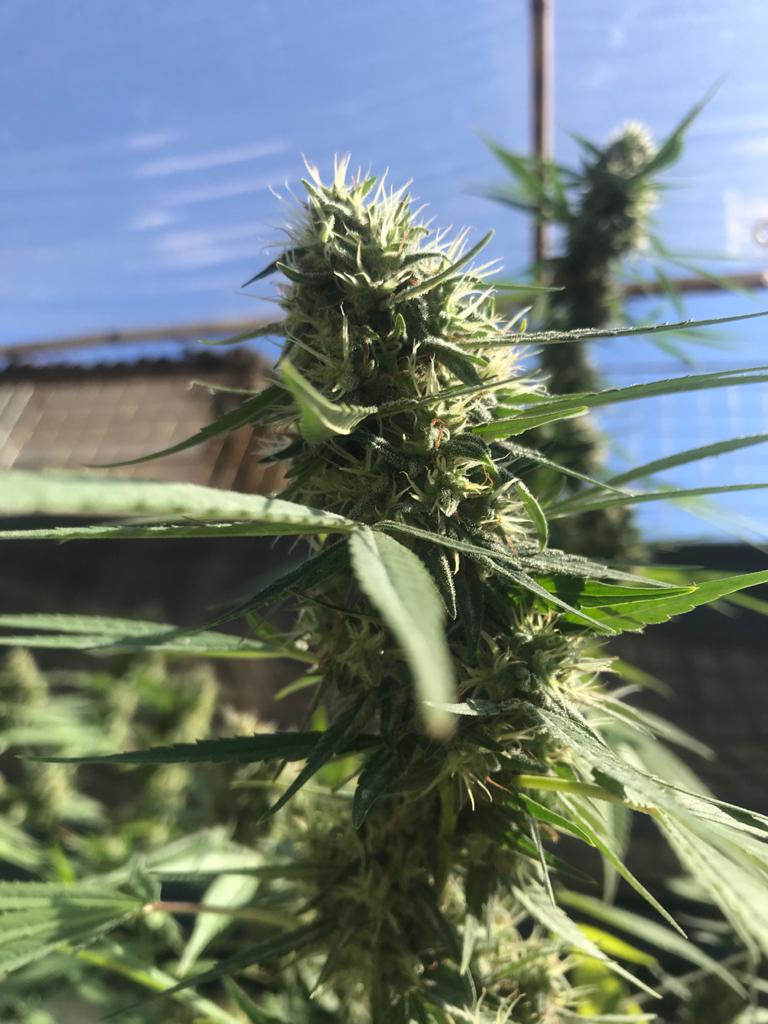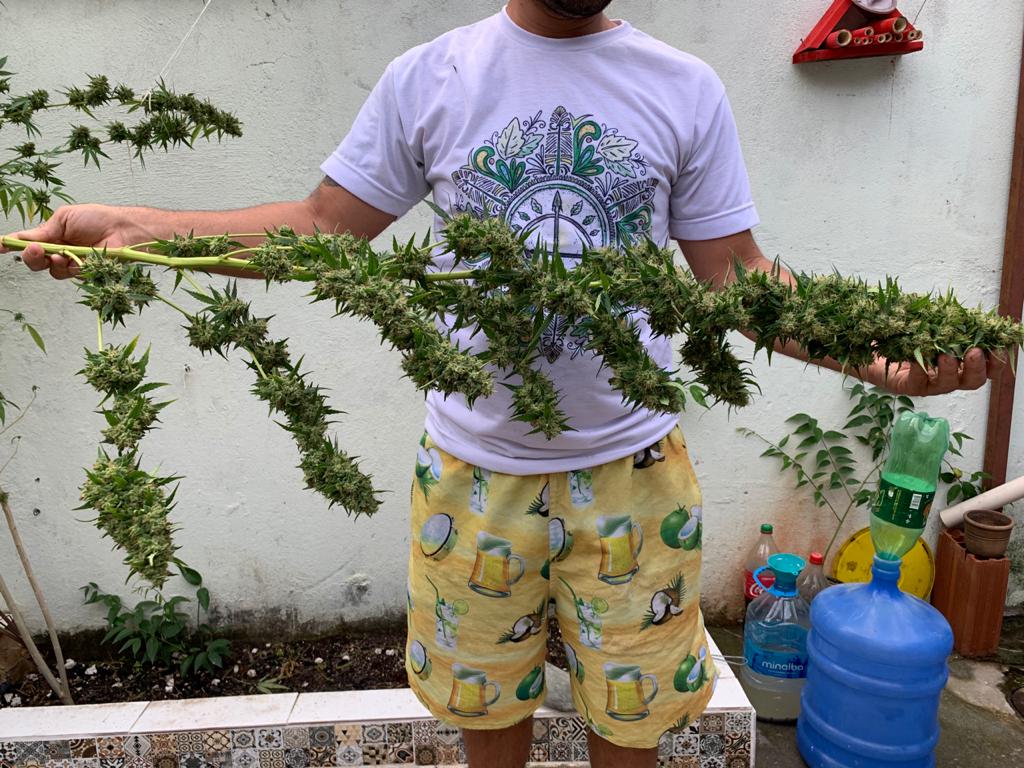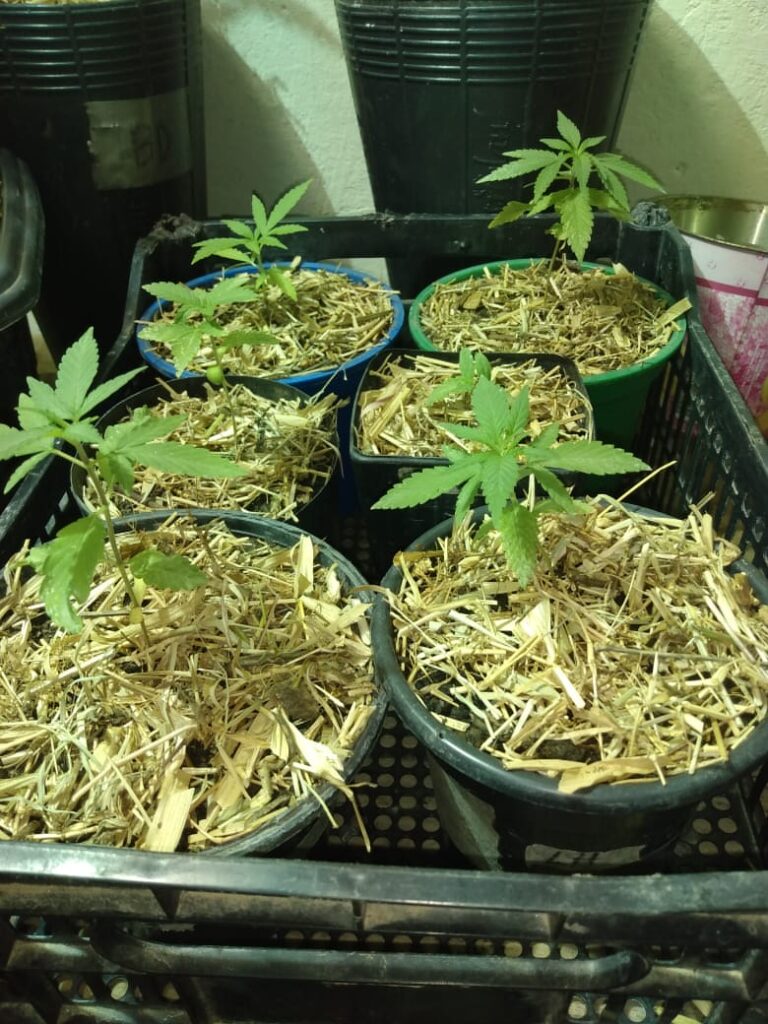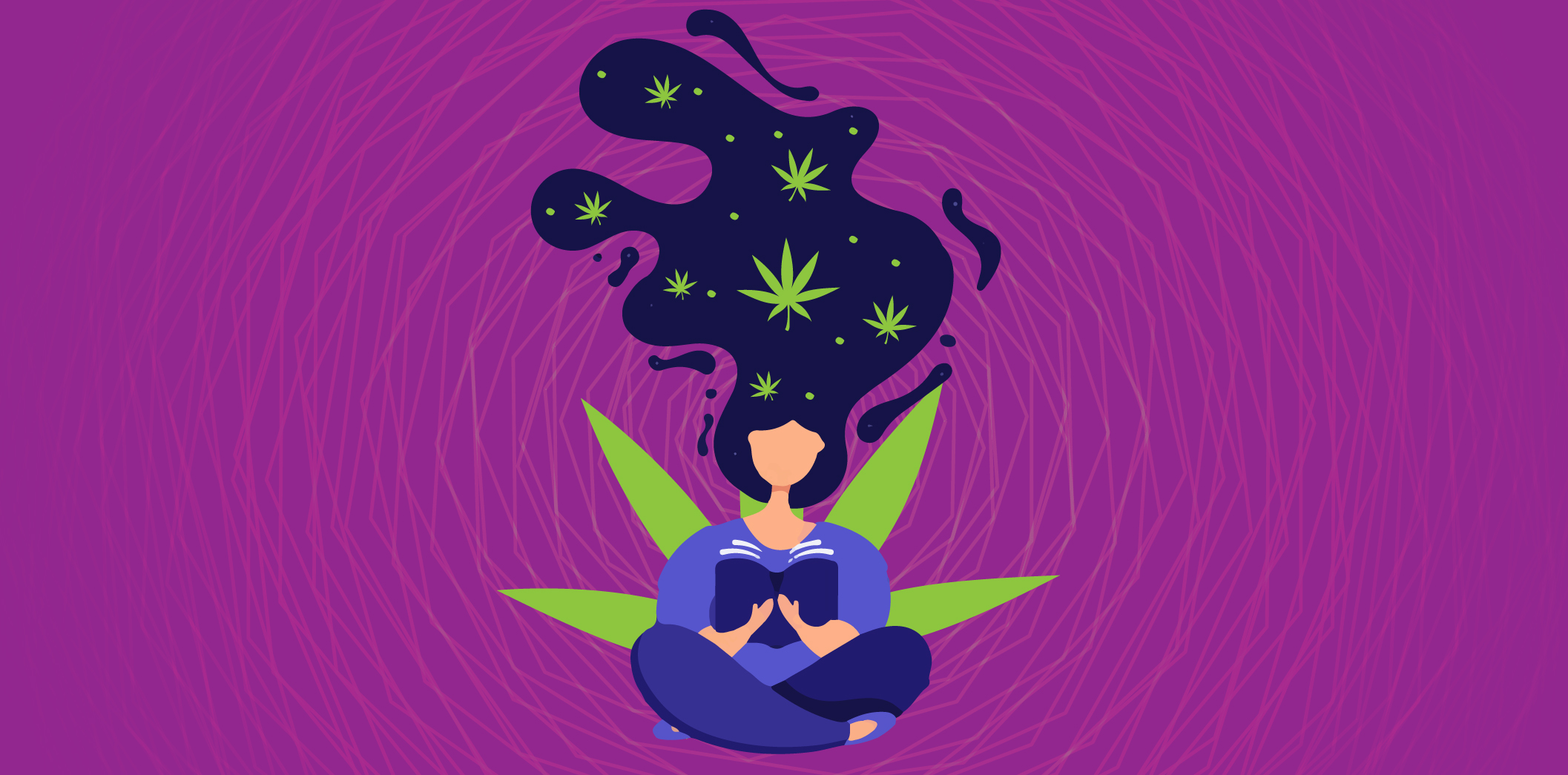- The Fight for Medical Marijuana in Brazil - August 25, 2020

Social movements are gathering and gaining strength, not only in medical causes, but also in relation to the end of deaths in favelas prompted by the War on Drugs.
Now, when the whole world is paying attention to Black Lives Matter, it is good to examine the legal status of cannabis in Brazil, which is directly linked to its African origins. Cannabis, popularly known as “maconha,” is a plant going through its regulatory process in the country. Its consumption, possession, and cultivation are considered illegal activities; however, for serious pathological cases, it can be used with medical supervision. Social movements are gathering and gaining strength, not only in medical causes, but also in relation to the end of deaths in favelas prompted by the War on Drugs. I’ve been engaged as part of this struggle that is just beginning.
Brought by African slaves in the sixteenth century, cannabis was called “Angola smoke” or diamba, and was fought by police and scientific forces who considered it to be responsible for behaviors that cause social disorder. The purpose of this prohibition was to curb customs; the first law that criminalized the use of the “pito do pango,” a handmade pipe used to smoke cannabis buds, was put into force in 1830. This law reflects the intention to control and repress Afro-religious activities and social gatherings, since it first prohibited the paraphernalia to consume and not the substance. It was during the 1960s that cannabis use became widespread in the country among the middle class, mostly by young people (MacRae, Simões, 2000).

After the harvest, the buds are pressed together with seeds, twigs, and leaves, forming a solid mass similar to a brick, where users often encounter dead insects.
Hard as a Rock
Marijuana is the illicit drug most consumed by Brazilians, and its main form of use is through smoking joints. Despite the enormous profitable potential, the State keeps refusing to regulate this market, subjecting most users to very low-quality product and having to engage with a complex market highly regulated by violence and dangerous connections involving criminal factions and public agents (Misse, 1997). Beside other illegal drugs, such as powdered cocaine and crack, marijuana is sold in crack houses and comes from Paraguayan cultivations, where the care with the plant, both in regard to health and to potency, is not a priority. After the harvest, the buds are pressed together with seeds, twigs, and leaves, forming a solid mass similar to a brick, where users often encounter dead insects. This form of production occurs due to the need for illegal transportation for distribution throughout the national territory.
Mothers and their children with neurological diseases became the main demanders for the right to the consumption and cultivation of cannabis, a theme that was largely publicized in the media and featured several public acts, such as the so-called “Marchas da Maconha” which take place annually in several capitals of the country.
Asking for Rights
In 2014, the debate about consumption for therapeutic purposes became popular in Brazil after an intense social mobilization that sensitized legal operators, doctors, and institutional agencies. Mothers and their children with neurological diseases became the main demanders for the right to the consumption and cultivation of cannabis, a theme that was largely publicized in the media and featured several public acts, such as the so-called “Marchas da Maconha” which take place annually in several capitals of the country. Under pressure, during the years 2014 and 2015, the National Health Surveillance Agency (ANVISA), which controls the list of prohibited substances, allowed the import for therapeutic purposes of tetrahydrocannabinol (THC) and cannabidiol (CBD), just two of hundreds cannabinoids, which proves the low investment in scientific and laboratory research.

Against this backdrop, civil society has been organizing to demand the right to access cannabis in Brazil. One of the main forms of organization is the cannabis association, which emerged as a way to bring together claimants to carry out collective purchases abroad, in order to mitigate the impacts of the high cost of cannabis oil. So far, only one association in the country can legally distribute cannabis-based products to its members, and it has been gradually increasing its production.
Supported by anthropological methodology, during my master’s degree I did some fieldwork in a cannabis association in the city of Rio de Janeiro. This particular association is non-profit and aims to provide medical and legal assistance to people seeking help to access cannabis for medicinal purposes. Another purpose of this association is to provide technical support for people who want to start or who already grow cannabis in their homes, helping members to handle the plant and produce handmade oil or prepare fresh buds to be vaporized.
Becoming a Cannabis Patient
Entitled “The green thumb patient: An ethnography about the cultivation and consumption of cannabis for therapeutic purposes in the city of Rio de Janeiro,” the research was published in a book by the Brazilian publisher, Autografia. Based on my fieldwork, I seek to understand through the experience of my interlocutors how they justify their practices and, consequently, how they organize the consumption and cultivation of cannabis to treat their diseases.
Between the years 2018 and 2019, the official number of import orders made by ANVISA grew 134% (Motta, 2020). For that, three documents are required: a medical prescription for cannabis, a medical report describing the disease, and an application for authorization from ANVISA. It is important to highlight that the prescription must contain, beyond the indication of use, the way the treatment (dosage) should be administrated, the company and product recommended by the doctor who, subsequently, establishes contact with a pharmaceutical representative from abroad, so the patient can purchase the product.

It is a slow and costly bureaucratic process, given that, due the prohibition of the plant cultivation and the need to import, the price of cannabis-based products is very high in Brazil, costing more than 1,500 Brazilian reais a 20ml bottle, which would be approximately 375 US dollars. Supported by the obstacles of bureaucratic slowness and the high cost of treatment, a group of Brazilian lawyers created a legal strategy that alludes to the immediate need for the drug and the risk of life that the patient runs if they interrupt the treatment, resulting in a judicial authorization that ensures domestic cannabis cultivation and handmade oil production. However, this strategy is risky, as judicial authorization is a preventive habeas corpus, which is only granted if the plaintiff is already committing a crime; in these cases, by planting marijuana (Policarpo et al., 2017). Currently in Brazil, more than 75 people can legally grow cannabis in their homes, receiving regular support from cannabis associations.
As some Brazilian social scientists point out, since the 2000s, the culture of cannabis cultivation for recreational use has grown significantly in the country, and it can be tracked through virtual forums (Vidal, 2010), through the publication of cultivation guides, and marking the social meetings between growers. In 2013, the anthropologist Marcos Veríssimo performed some fieldwork in spaces of grower sociability—in other words, parties and cannabis cups—noting the circulation of a different knowledge about the plant and its forms of consumption and cultivation, designating these cultivators a superior status from consumers, saying they have a “green thumb,” and that the people who domesticate the plant are, at the same time, domesticated by it (Veríssimo, 2017).
Therefore, those with a green thumb are those growers who are successful in growing cannabis, a status that can be perceived through the quality of the buds. To establish a dialogue, I interviewed six patients from the association where I did my fieldwork. All of them can legally grow cannabis at home and produce their medicines by hand; however, only two of them had already had contact with the plant in a recreational way. Altogether, there were two fathers and mothers who learned to cultivate to treat their children’s illnesses (epilepsy and microcephaly), two adults who learned to cultivate to treat their own illnesses (chronic pain), and, finally, two adult people who had already cultivated for recreational and social purposes and went through the medical-legal process of becoming patients (chronic pain).

Conclusion
To conclude, I would like to show the reader two reflections provided by the research. The first is that the boundaries between the legal and the illegal are fluid and show the contradiction of the laws that prohibits cannabis, making it clear that they are not effective. I empirically exemplify my reflection by describing experimental situations that the fieldwork has provided. Only in the two interviews I conducted with the children’s parents did I not use cannabis with my interlocutors. Therefore, in the other four interviews, I vaporized cannabis during the conversations, together with my interlocutors. Thus, the differentiation between therapeutic use and social use was not covered by legislation, because we were vaporizing at the same time, consuming the same plant in the same way; so, the differentiation in that situation was due to the objective of each person when consuming: to relieve pain or to get high.
In Brazil, people who grow cannabis to treat their illnesses or for their familiars are “green thumb patients.”
The last reflection I will bring to the reader is the line of knowledge transmission. Through cannabis associations, patients who cultivate the plant learn to be successful in this practice by having contact with more experienced growers; therefore, those who teach the techniques are the “potheads,” who, for decades, have been hiding in order to avoid police repression and deprivation of freedom, sharing not only knowledge, but also practices and morals. In Brazil, people who grow cannabis to treat their illnesses or for their familiars are “green thumb patients.” Despite all this context, movements within the favelas and the access to discussions and information like this are even smaller, postponing even more the end of the epidemic of deaths of Black people caused by the War on Drugs.

Art by Marialba Quesada.
References
Biehl, J., Amon, J. J., Socal, M. P., & Ptryna, A.. (2012). Between the court and the clinic: Lawsuits for medicines and the right to health in Brazil. Health and Human Rights Journal, 14(1), 1–17.
Macrae, E., & Simões, J. (2000). Rodas de fumo: O uso da maconha entre camadas médias urbanas [Smoking circles: The use of marijuana among urban middle classes]. Salvador, Brazil: CETEAD/UFBa.
Martins, L.; Ramos, L. (2018). O Poder Judiciário como balcão de direitos: reflexões sobre as estratégias jurídicas para a garantia do uso medicinal da maconha [The power of the judiciary as a secretary of rights: Reflections on legal strategies to guarantee the medical use of marijuana]. Sociedade, 1, 190–207.
Misse, M. (1997). As ligações perigosas: mercado informal, ilegal, narcotráfico e violência no Rio [Dangerous connections: Informal, illegal, drug trafficking and violence in Rio]. Contemporaneidade e Educação, 1(2), 93–116.
Motta, Yuri. (2020). O paciente dedo-verde: uma etnografia sobre o cultivo e consumo de cannabis para fins terapêuticos na cidade do Rio de Janeiro [The green thumb patient: An ethnography on the cultivation and consumption of cannabis for therapeutic purposes in the city of Rio de Janeiro. Rio de Janeiro: Autografia.
Policarpo, F., & Martins, L. (2019). Dignidade, Doença e remédio: uma análise da construção médico-jurídica da maconha medicinal [Dignity, disease and medicine: An analysis of the medical-legal construction of medical marijuana]. Revista Antropolítica, 47(2), 143–166.
Policarpo, F. (2016). O consumo de drogas e seus controles: uma perspectiva comparada entre as cidades do Rio de Janeiro, Brasil, e de San Francisco, EUA [Drug use and its controls: a comparative perspective between the cities of Rio de Janeiro, Brazil, and San Francisco, USA]. Rio de Janeiro: Consequência Editora.
Policarpo, F., Veríssimo, M., & Figueiredo, E. (2017). “A fumaça do bom direito”: demandas pelo acesso legal à maconha na cidade do Rio de Janeiro [“The smoke of the good right”: Demands for legal access to marijuana in the city of Rio de Janeiro]. Revista da Plataforma Brasileira de Políticas de Drogas, 1(1), 13–37.
Veríssimo, M. (2017). Maconheiros, fumons e growers: um estudo comparativo do consumo e do cultivo caseiro de canábis no Rio de Janeiro e em Buenos Aires [Potheads, smokers and growers: A comparative study of the consumption of homegrown cannabis in Rio de Janeiro and Buenos Aires]. Niterói: Editora Autografia.
Vidal, S. (2010). Colhendo Kylobytes: o Growroom e a cultura do cultivo de maconha no Brasil [Harvesting Kilobytes: The growroom and the culture of cannabis cultivation in Brazil] (Unpublished monograph). Universidade Federal da Bahia, Salvador.
Take a minute to browse our stock:
Did you enjoy reading this article?
Please support Chacruna's work by donating to us. We are an independent organization and we offer free education and advocacy for psychedelic plant medicines. We are a team of dedicated volunteers!
Can you help Chacruna advance cultural understanding around these substances?
















